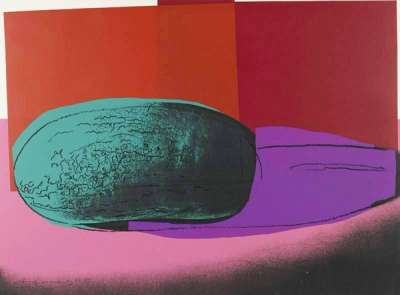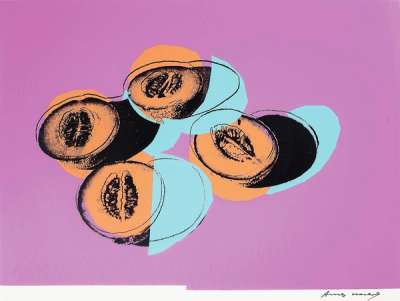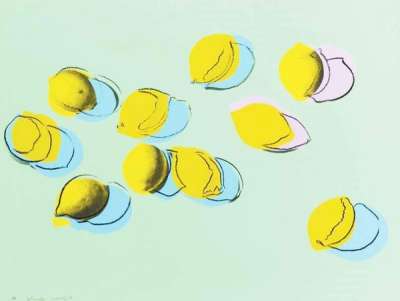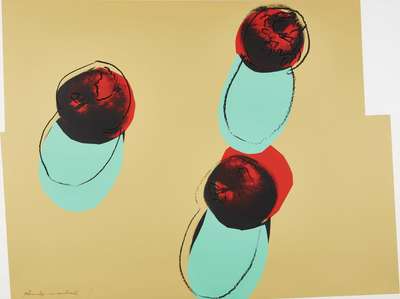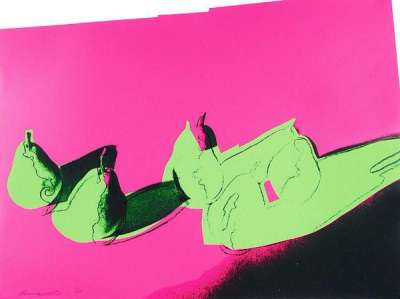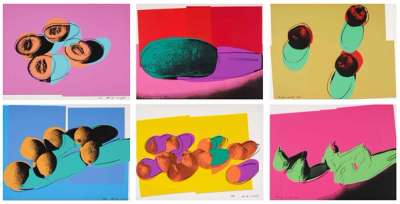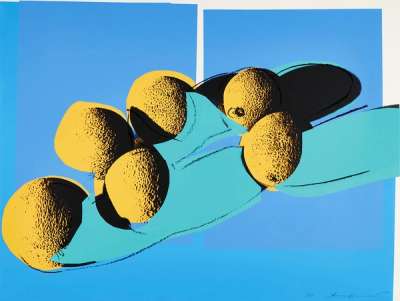
Peaches (F. & S. II.202)

Peaches (F. & S. II.202)
Signed Print
Andy Warhol
£15,000-£22,000
$30,000-$45,000 Value Indicator
$27,000-$40,000 Value Indicator
¥140,000-¥200,000 Value Indicator
€18,000-€27,000 Value Indicator
$150,000-$220,000 Value Indicator
¥2,840,000-¥4,160,000 Value Indicator
$19,000-$28,000 Value Indicator
AAGR (5 years) This estimate blends recent public auction records with our own private sale data and network demand.
There aren't enough data points on this work for a comprehensive result. Please speak to a specialist by making an enquiry.
Medium: Screenprint
Edition size: 150
Year: 1979
Size: H 76cm x W 102cm
Signed: Yes
Format: Signed Print
TradingFloor
Track this artwork in realtime
Watch artwork, manage valuations, track your portfolio and return against your collection
Track auction value trend
Auction Results
| Auction Date | Auction House | Location | Hammer Price | Return to Seller | Buyer Paid |
|---|---|---|---|---|---|
| January 2025 | Phillips London | United Kingdom | |||
| October 2024 | Phillips New York | United States | |||
| March 2023 | Clars Auction Gallery | United States | |||
| July 2022 | Rosebery's Fine Art Auctioneers | United Kingdom | |||
| December 2018 | Sotheby's New York | United States | |||
| May 2018 | Van Ham Fine Art Auctions | Germany | |||
| April 2012 | Christie's New York | United States |
Meaning & Analysis
Peaches (F. & S. II.202) is a 1979 screen print by American Pop Artist, Andy Warhol. Released in a limited edition of 150 as part of Warhol's Space Fruit series, this screen print depicts a dozen peaches rolling across the frame of the signed image.
These peaches, photographed by Warhol with an exaggerated shadow, have been outlined by the artist in black and coloured in a uniform peachy-orange colour. Their shadows are emphasised in purple and teal colour blocks While some texture and shading remains visible enough to identify the fruits, their monochromatic hue and extreme shadow make them almost unrecognisable. The purple in particular pops against the yellow-collage like background of the peaches. This background, two rectangles joined together but off-kilter, tilts towards the left, putting the entire image off balance and giving it a sense of movement, or even defiance of gravity.
Peaches comes from Warhol’s larger 1979 series, Space Fruit, which began as a collaboration with printer Rupert Jasen Smith. Space Fruit is unique in Warhol’s oeuvre as one of his only still-life series. The subject matter of fruit draws from a long tradition of still life. Peaches in particular appears to evoke the famous apple still lives of the French post-Impressionist Paul Cezanne.
